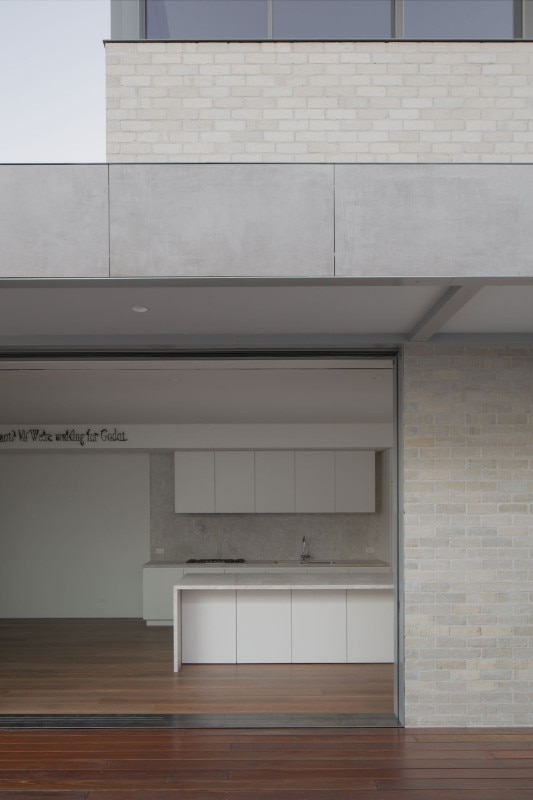In 1860, Brooklyn was a modest two-story brick townhouse. Over time, it underwent significant modifications and functional adaptations, including a two-story Tudor-style double loggia extending toward the street. These changes allowed it to serve first as a seven-bedroom residence and, more recently, as an artists' hotel.
The project by Trower Falvo Architects restored the historic terrace house to its original purpose as an elegant home. The architects expanded the volumes through a series of interventions that better connected the spaces and emphasized the relationship between the interior and exterior.
The main feature of the project is the "more-than-a-corridor" space, which connects the articulation of the rooms—some open to the sky, like the patio in front of the new kitchen—throughout the house’s entire 40-meter length. This space literally anchors itself to the precious loggia at the front and the garage at the rear. Referred to as a veranda by the designers, it serves not only as a circulation area but also as a device to enhance the use of the inner courtyard, creating a sheltered space and bringing zenithal light into the darkest parts of the pre-existing volume.
Another key element is the new volume added to the existing structure: a harmonious extension that reflects the materiality of the brick while subtly varying its hue. It asserts its contemporary identity through a refined system of openings integrated into the pavilion's crowning structure.

The interiors are treated with elegance and restraint, maintaining a dialogue with the original residence's character while remaining distinctly modern. Uniform plasterwork, equipped walls, and full-height paneling share a refined simplicity that prioritizes functionality. This approach is evident in the additional doors opening off the main corridor or in the configuration of furnishings, such as the kitchen island. The island serves as a pivotal element for domestic activities and a gathering place, seamlessly connecting the interior to the exterior.



















